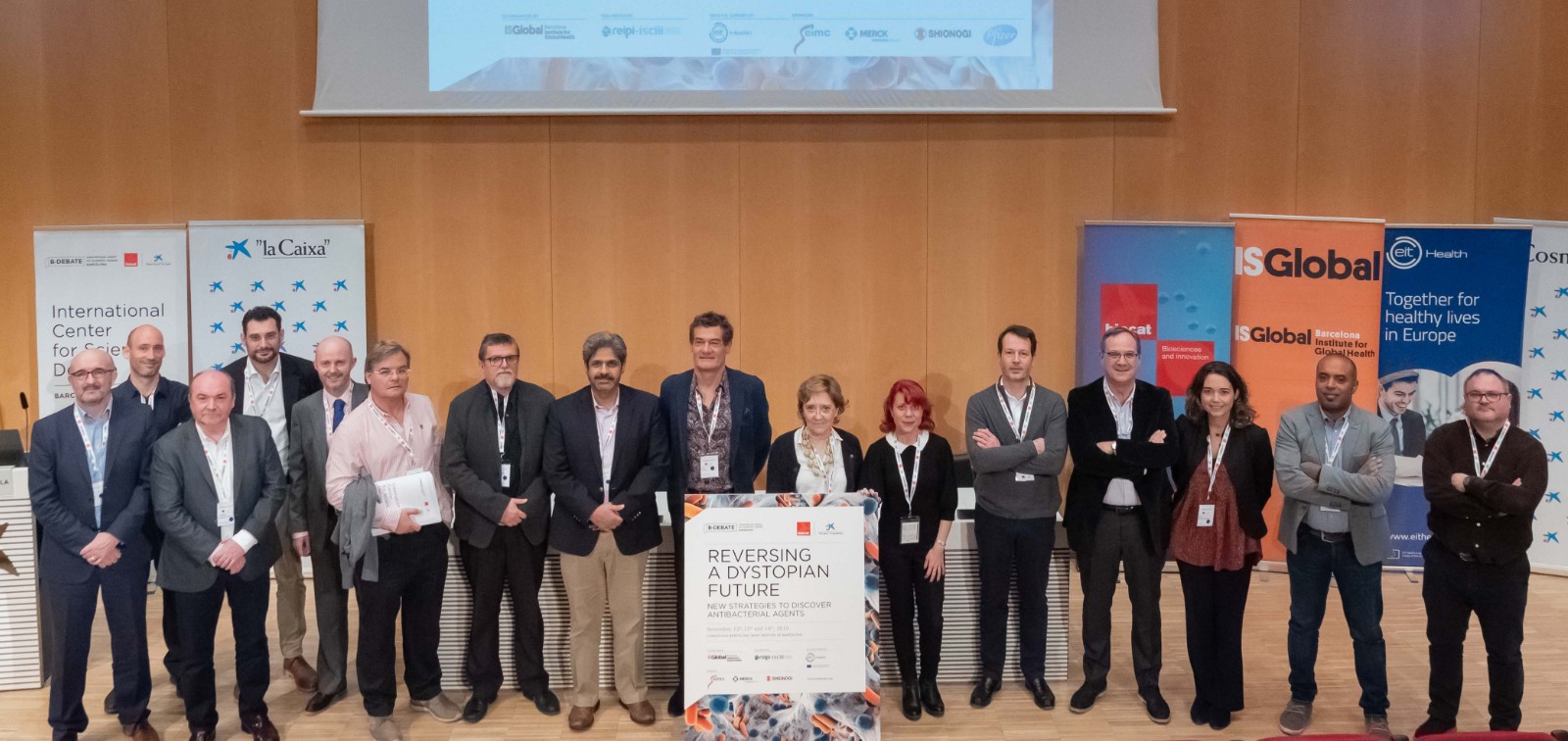Promising Strategies to Combat Antimicrobial Resistance Exist, but They Need to Reach the Market and the Patient
This is one of the conclusions of the B-Debate on antimicrobial resistance that was held in Barcelona from November 12 -14
18.11.2019
Antimicrobial peptides, bacteriophages, marine organisms, RNA inhibitors, new combinations of known drugs…. These are some of the new strategies presented at the B-Debate “Reversing a dystopian future. New strategies to discover antibacterial agents”, co-organised by ISGlobal, biocat and “la Caixa”. The event gathered 100 researchers and experts in the field at the CosmoCaixa, Barcelona, from November 12 to 14.
“Tackling antimicrobial resistance means tackling two issues: one is the emergence of multiresistant bacteria, the other is the spread of such bacteria, or of the genes that confer reistance,” pointed out Jordi Vila in his opening lecture. Vila, who coordinates the Antimicrobial Resisteance Initiative at ISGlobal, organised the event together with researchers Sara Soto and Clara Ballesté.
Several speakers reminded the audience that, with current trends, by 2050 multiresistant bacteria will be responsible for 10 million deaths worldwide – more than those caused by cancer. However, the current investment in antimicrobial resistance research is 16-fold lower than the investment in cancer research.
How can we revert this trend? Economist Laurence Roope, from Oxford University, highlighted the parallelisms between climate change and antimicrobial resistance: individual behaviours affect public goods, there are few incentives to change behaviours, both will have a high cost for future generations, and economic considerations can help fight them. He also raised the ‘excess versus access’ challenge, i.e. reducing antibiotic use while ensuring they reach the populations that need them most (every year, 1 million children die from pneumonia because of lack of access to antibiotics).
On the second day, presentations focused on different strategies to discover new antibacterial ‘weapons’, including compounds from marine organisms, bacteriophages, or molecules that inhibit resistance mechanisms. The experts underlined the urgent need to develop new classes of drugs, with new targets and mechanisms of action, particularly against gram-negative bacteria. “Most of the big pharma companies have abandoned the discovery of new antibiotics, because they are not profitable,” warned Seamus O’Brien, from the Geneva-based Global Antibiotic Research & Development Partnership (GARDP). The challenge has been taken over by small companies that have interesting products but lack the funds to take them to the market. “We need to foster socially valuable innovation through the smart use of new technologies and the right incentives,” said Joan Bigorra, director of Strategy and Innovation at ISGlobal. Other valuable initiatives were presented, such as JPI-AMR, a funding organism that not only focuses on new therapies, but also on transmission, environment and surveillance; and GARDP, that seeks to identify promising products and help them go through clinical development.
The third day also included flash-talks, which allowed young researchers to present their work. These talks included a variety of strategies, from natural defense peptides or monoclonal antibodies to antibiotics that are inactivated with sunlight, and suggest “an optimistic future” in the fight against bacterial resistance, says Clara Ballesté, coordinator of the Antimicrobial Resistance Initiative at ISGlobal.
“Although we have many challenges ahead, there are reasons to be optimistic. We need to continue doing high-quality research and working to change behaviours,” says Sara Soto, ISGlobal researcher.



